Rehearsals from the Korean Avant-Garde Performance Archive
Korean Cultural Centre UK
Artists: Lee Bul / Hyun Joon Chang / Kang-Ja Jung / Christine Sun Kim / Ku-Lim Kim / Kang-So Lee / Kun-Yong Lee / Seung-Taek Lee / Neung-Kyung Sung / Zadie Xa
Korean Cultural Centre UK
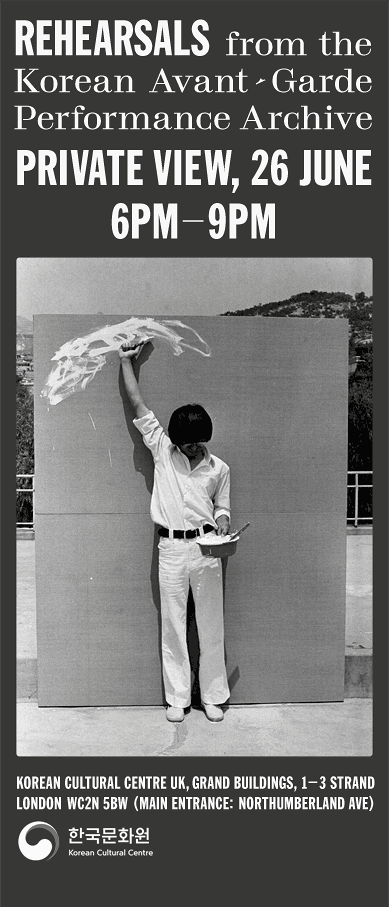


The history of what in Europe and North America has been categorised in an art-historical context as performance art is one that continues to be revised and retold in East Asia. The body as a tool, language and artistic medium developed in the visual arts in Korea under precarious social and political environments and conditions. ‘Rehearsals from the Korean Avant-Garde Performance Archive’ is a multi-faceted exhibition and stage that explores the development of South Korea’s performance art scene during the late 1960s and 1970s, a time before national museums of modern and contemporary art were established there.[1] Fostered in an atmosphere of opposition and rebellion against Park Chung-Hee's political regime, and in a social order that sought to restrict and control the body and conscience of its citizens living under authoritarian rule, artists turned to radical forms of expression, often in the public sphere, which broke with what was conventionally understood to be regarded as art by their peers, art educational institutions and the media. Consequently, by the mid-1970s artists and critics began to introduce and develop their own terminology, such as "ibentu" (events) and "sakkon" (incidents) in order to help designate and position performance as a variable medium for creative expression in the visual arts. ‘Rehearsals from the Korean Avant-Garde Performance Archive’ begins from a conversation about how to present and contribute to a non-Western history of performance art through the use of live events, archival material and contemporary artistic practices. The exhibition represents the first chapter of my ongoing research into the development of early avant-garde art and bodily art from East Asia.
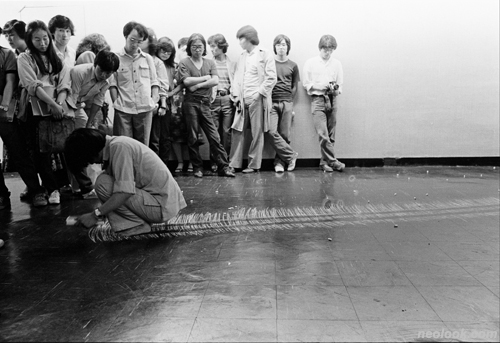
Kun-Yong Lee, 'Snail’s Gallop', 1979
Alongside contemporary work, the project incorporates interviews with artists active during the 1960s and 1970s, primary source material and documents donated from the personal archives of pioneering artists such as Kang-Ja Jung, Kim Ku-Lim and Seung-Taek Lee. The exhibition includes the first experimental film from Korea by influential artist Kim Ku-Lim’s ‘The Meaning of 1/24 Second’, 1969, archival material around pivotal events such as the first nude performance in Korea, ‘Transparent Balloons and Nude Happening’, May 30, 1968, and recently compiled material from pivotal exhibitions such as the ‘United Exhibition of Korean Young Artists’ (Ch’ŏngnyŏn chakka yŏllipjŏn), (1967) sourced from the Asia Culture Center (ACC), Gwangju, South Korea. Much of this material has never been presented in the United Kingdom before. In addition, the exhibition also invites artists Kun-Yong Lee (b. 1942), Seung-Taek Lee (b.1932) Kim Ku-Lim (b.1936) and Neung-Kyung Sung (b. 1944), pioneering forces in the Korean performance scene, to re-present key works within this context, further exploring the role rehearsing can play in the presentation of historical material.
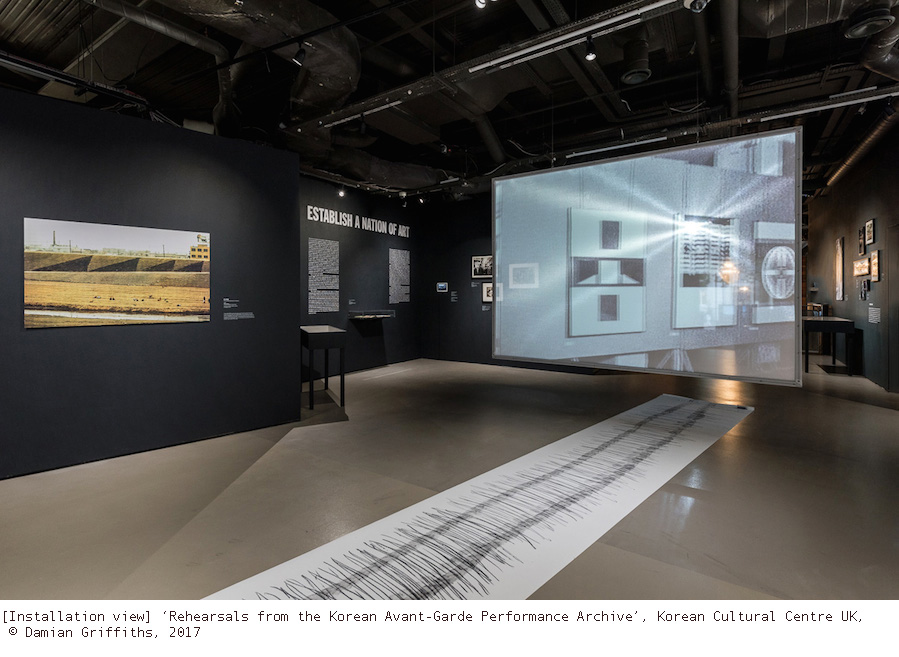
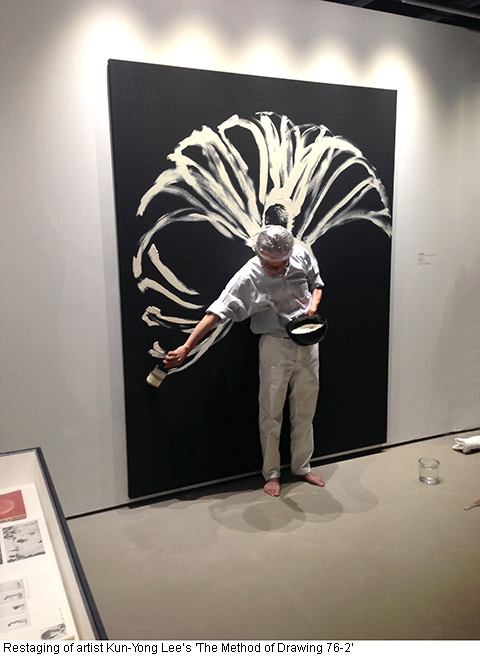

The exhibition also presents newly commissioned performances and existing artworks from contemporary artists Christine Sun Kim, Zadie Xa, Hyun joon Chang and Lee Bul, as "historical rehearsal" of these events and histories; a method developed for the exhibition to explore the re-staging, re-framing and reinterpreting of the archive, and as a spatial strategy to reconsider how performance may provide a space for historical mediation and the continuation of knowledge. A methodology that will continue to be developed over my ongoing materialisation of such performance histories moving forward.
Documenting a time when the term performance art did not exist in Korea, the exhibition puts forward a non-linear approach to chronicling this period of artistic experimentation and a distinct Korean avant-gardism that flourished despite existing under a military regime, and Western and Japanese influences.[2] In doing so, I hope to reconsider the active use of such terminology in discussing and canonizing the development of such experimental practises in East Asia. Therefore the exhibition draws on influential moments in Korea’s art history as starting points in formulating networks with other artistic groups, actions, events and exhibitions that were occurring in Korea during this period, rather than looking for art-historical equivalents, or simultaneities, in Euroamerica: it is important to note that international literature and texts on avant-garde and conceptual art theory were not widely translated into Korean during this period. These moments include: ‘Happening with a Vinyl Umbrella and a Candle’, 1967; ‘Transparent Balloons and Nude Happening’, May 30, 1968 (Kuk-Jin Kang, Kang-Ja Jung, Chan-Seung Jung); ‘Funeral Ceremony of the Established Art and Culture’, Aug. 15 1970 (The Fourth Group: spearheaded by artist Ku-Lim Kim); ‘Wind-Folk Amusement’, 1971 (Seung-Taek Lee); ‘Bar in the Gallery’, 1973 (Kang-so Lee); and ‘Snail’s Gallop’, 1979 (Kun-Yong Lee). Many of these events were collective efforts, which also highlights the importance of self-organising during the 1960s and 1970s.
 Kun-Yong Lee ‘Body Drawing 76-2‘, 1976
Kun-Yong Lee ‘Body Drawing 76-2‘, 1976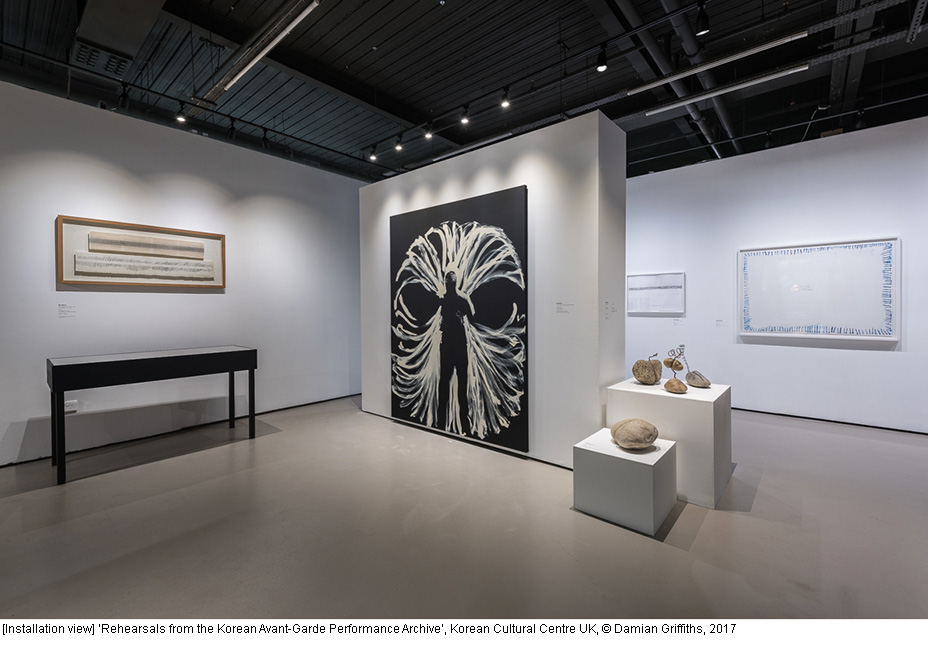
Displayed throughout the gallery, these moments and accompanying research materials are choreographed together like linked bodies, connecting different generations of contemporary artists to documentation and archival material. In one regard, I hope to complicate what Stefan Tanaka has called the "historicity of chronology"[3], whilst rearranging the historical reception of the status of the archive, documentation and artwork through exhibition display and material utilisation. For example, Lee Bul’s endurance work ‘Abortion’ (1989) is presented in relation to the historical event ‘Transparent Balloons and Nude Happening’ (1968), the first nude performance in Korea. Both works challenge the subjugation of women in society, and use the naked body as an expressive and visceral means to undermine conventional notions of female nudity – simultaneously pushing the boundaries of what constituted an artwork in their respective periods. Adding to this is Kim Ku-lim’s ‘Body Painting A’, (1969), the first recorded conceptual piece that included the application of paint to the human body.
Like the anatomy of an archive, ‘Rehearsals from the Korean Avant-Garde Performance Archive’ will unfold and develop over time with a number of live events, with artists Zadie Xa and Hyun Joon Chang utilising the archival material to develop newly commissioned performances for the exhibition. For example Zadie Xa directly echoing a similar fabric and colour to Seung-Taek Lee’s ‘Wind-Folk Amusement’, (1971), for her performance ‘The Sea Child, Octopus and Brass Bell’ (2017). A significant point during the course of the exhibition is Kun-Yong Lee’s re-enactment of his 1979 ‘Snail’s Gallop’ performance and ‘The Method of Drawing 76-2'. This event will mark the first time the artist has ever performed in the United Kingdom. The event features the artist’s repetition of simple lines of 1 and 0—to a seemingly unending point— then walking over those lines barefoot, blurring their presence. Leaving a long horizontal trail of chalk, Lee interrogates the process of mark-making and gesture, using his body for communicating and manifesting artistic, political and social thinking. And like Kun-Yong Lee’s Snail’s Gallop, the exhibition simultaneously puts forward a history of performance and avant-garde art from Korea while contesting any singular reading of it through the very process of exhibiting a history bound to ephemerality and collectivity.

Kang-kuk-jin, Chŏng Ch’an-sŭng and Jung Kangja
Murder on the Han River 1968
Murder on the Han River 1968
Courtesy the artists
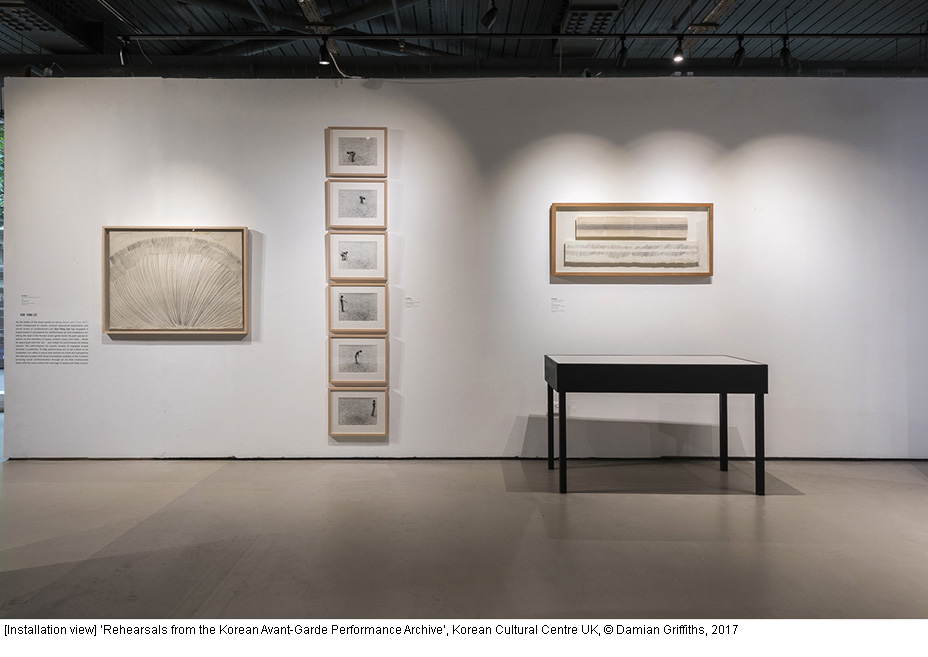



Kim Ku-Lim, From Phenomenon to Traces,1970, Courtesy of the artist

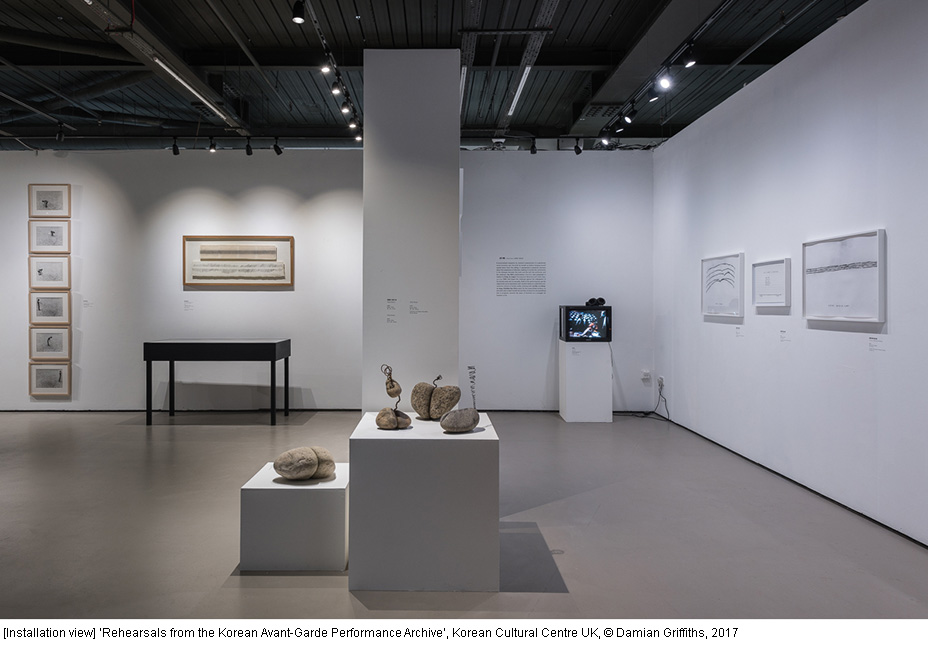

News report about 'From Phenomenon to Traces', Ku-Lim Kim, 1970
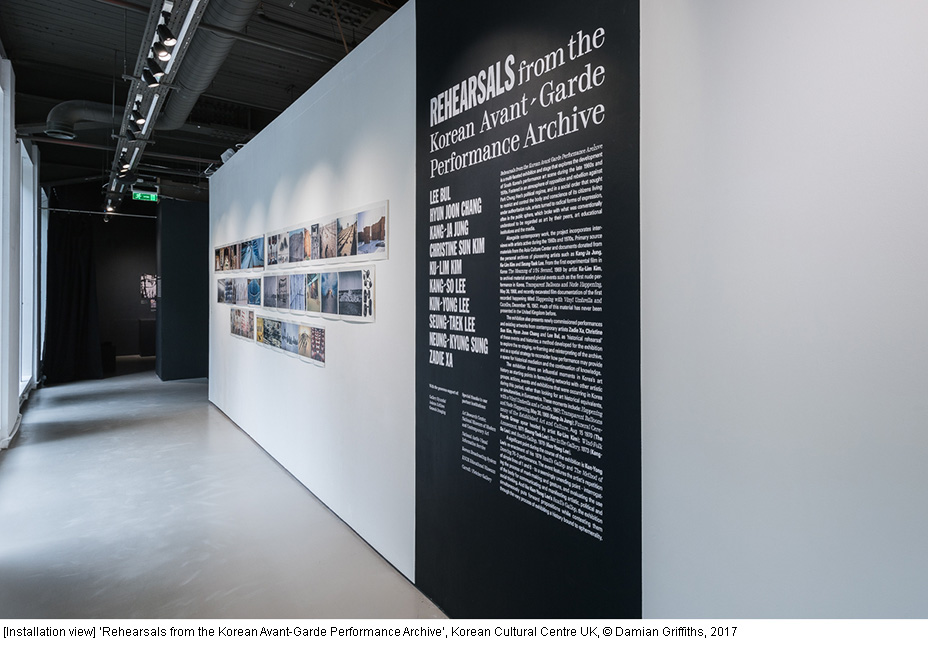
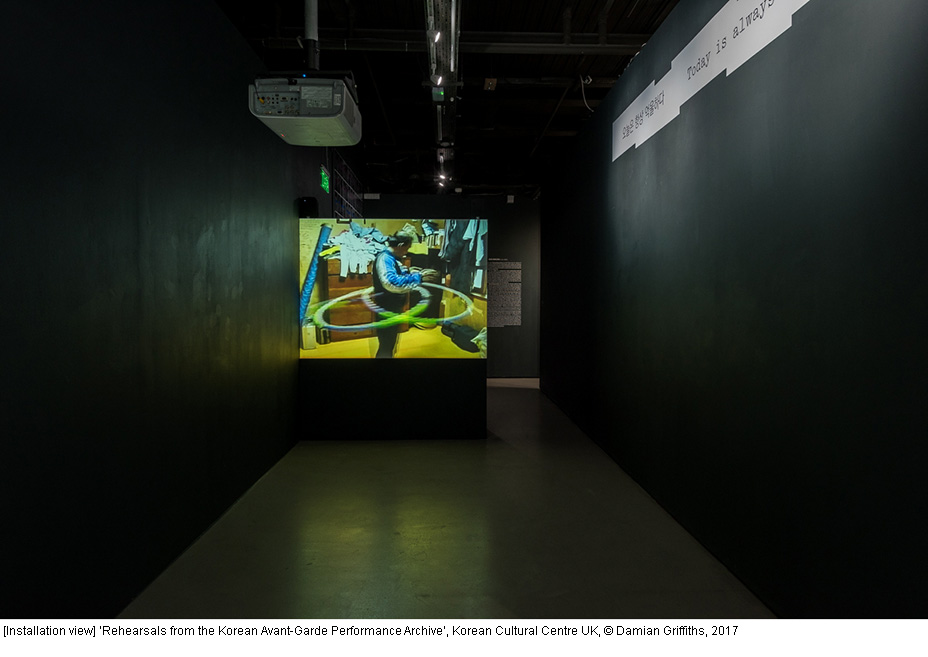
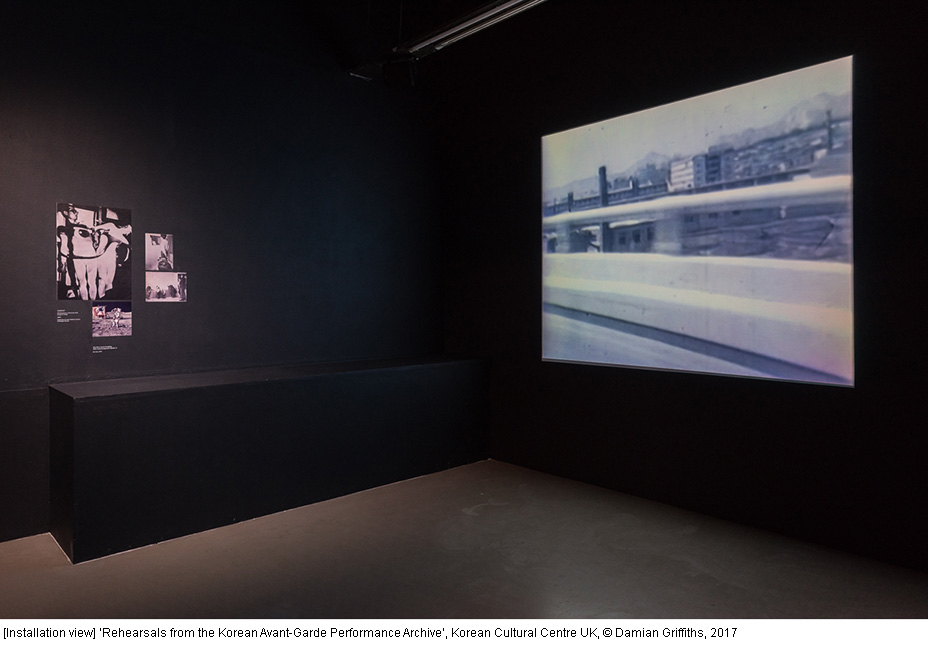

Kim Ku-lim, The Meaning of 1/24 Second, 1969


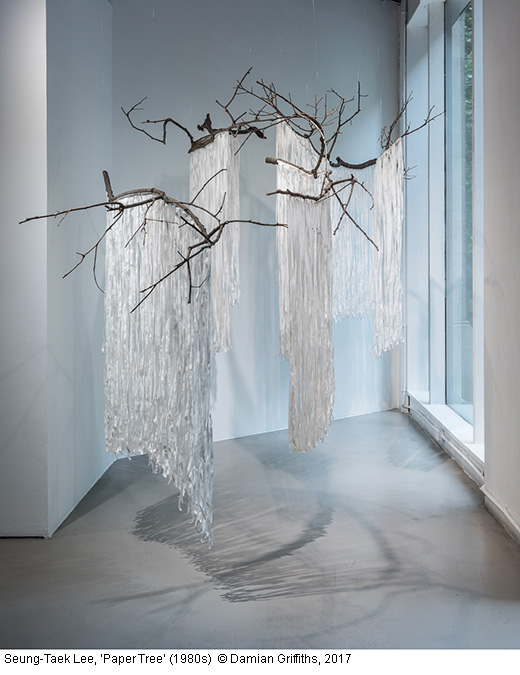

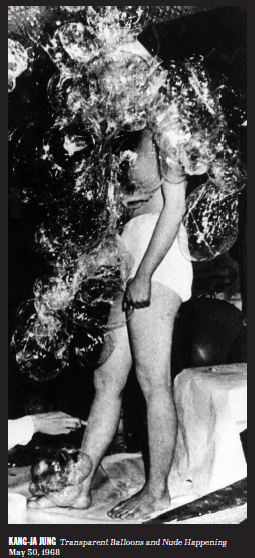
‘Transparent Balloon and Nude Happening’, May 30 1968, Kang Kuk-jin, Jung Kang-ja, Jung Chang-seung at C’est si bon, Korea

Rehearsals from the Korean Avant-Garde Performance Archive
Korean Cultural Centre UK
Grand Building 1-3 Strand
London WC2N 5BW
UK
June 27–August 19, 2017
Artists: Lee Bul / Hyun Joon Chang / Kang-Ja Jung / Christine Sun Kim / Ku-Lim Kim / Kang-So Lee / Kun-Yong Lee / Seung-Taek Lee / Neung-Kyung Sung / Zadie Xa
Curated by KCCUK’s in-house curator, Je Yun Moon, independent curator Victor Wang and ACC curator Ah-Young Lee
[Opening the exhibition will be a restaging of artist Kun-Yong Lee’s 1979 'Snail’s Gallop' performance and 'The Method of Drawing 76-2']
[1] Jung Kangja, interviewed by Yoon Jinsup, Seo Junggeol, November 13, 2014, Asia Culture Center, Gwangju, South Korea.
[2] Kim Mi Kyung , "Expressions without Freedom: Korean Experimental Art in the 1960s and 1970s?" in C-MAP presentation at The Museum of Modern Art, April 2014, http://post.at.moma.org/content_items/202-expressions-without-freedom-korean-experimental-art-in-the-1960s-and-1970s. Accessed Feb. 8 2017.
[3] Stefan Tanaka, "History without Chronology", Public Culture 28.1 (January 2016), 161-186 (p. 162)
----
Co-produced by Asia Culture Centre, Asia Culture Institute in Gwangju
With kind support by Gallery Hyundai
----
[EVENTS]
[PERFORMANCE 1]: Kun-Yong Lee - 'Snail’s Gallop' performance and 'The of Drawing 76-2'.
Opening the exhibition will be the first restaging of artist Kun-Yong Lee’s important 1979 'Snail’s Gallop' performance and 'The Method of Drawing 76-2' in the United Kingdom. First performed in 1979 at Namgye Gallery in Daejeon, Korea, and later presented at The 15th Bienal de São Paulo that same year, 'Snail’s Gallop' is a pivotal performance when tracing the development of Kun-Yong Lee’s artistic practice.
[PERFORMANCE 2]: June 30, 7pm, Zadie Xa, 'The Sea Child, Octopus and Brass Bell', 2017
[PERFORMANCE 3]: July 27, 29, 1 & 5pm, Hyun Joon Chang, 'A Conversation between Generations Deprived of Generations A Conversation without a Counterpart', 2017
----
[EXHIBITION REVIEWS]
*The Economist
'When South Korea was poor, repressive—and super-cool'
*ArtAsiaPacific
REHEARSALS FROM THE KOREAN AVANT-GARDE PERFORMANCE ARCHIVE
*ArtReview Asia Magazine, Autumn 2017, ‘Rehearsals from the Korean Avant-Garde Performance Archive’ at Korean Cultural Center, London, by Fi Churchman
*The Guardian, ‘Korea's avant garde go nuclear – in pictures’, Thursday 17 August 2017
VICTOR WANG
All content property of © Victor Wang 2009 - 2024 All rights reserved -- BEIJING - LONDON.
All content property of © Victor Wang 2009 - 2024 All rights reserved -- BEIJING - LONDON.